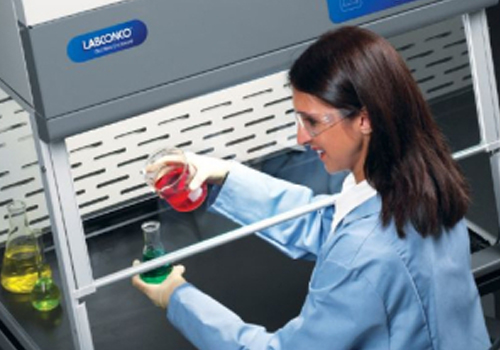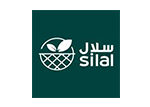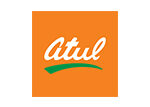Fume Hoods
We offer a wide range of high-quality products to meet diverse needs. Our selection includes wood-based furniture and metal furniture, which provide both durability and aesthetic appeal. In addition, we specialize in lab furniture, featuring essential components such as safety cabinets, and work surfaces designed to support safe and efficient laboratory operations. Furthermore, we provide laboratory equipment, fixtures, and seating, all crafted to enhance functionality and comfort. With our comprehensive product lineup, we ensure that clients receive reliable solutions tailored to their workspace requirements.

Fume Hoods
Standard Fume Hoods
Standard fume hoods are designed for use in Laboratory applications that requires safe ventilation of hazardous and toxic fumes. The laboratory staff use this fume hood to protect both the user and the lab environment. In addition, they connect it to a remote exhaust system to safely remove hazardous fumes. Manufacturers offer these fume hoods in various forms. For example, they include bench top, low height, distillation, or walk-in models. The choice depends on the specific application and user requirements.
Fume Hoods
Special Application Fume Hoods
Special Application fume hoods are designed and engineered for use with specific applications like Distillation, Acid Digestion, Perchloric Acid and Radioisotope applications.


Fume Hoods
Ductless and Filtered Fume Hoods
Ductless or filtered fume hoods have built-in airflows to recycle clean air back into the laboratory. These fume hood can be equipped with different exhaust filters depending on application and use. Ductless fume hood can also be used as mobile fume hood.
Fume Hoods
Custom Fume Hoods
Customers request custom fume hoods when standard options don’t meet their needs. In response, Laboratory Solutions uses its expertise to design, manufacture, and commission large, complex, and tailored fume hood.


Fume Hoods
Canopy Hood
Manufacturers design canopy hoods to vent non-toxic materials such as heat, steam, and odors. Unlike standard fume hoods, these hoods are ideal for placement above large or bulky equipment that doesn’t require an enclosed chamber. Laboratories commonly use canopy hoods to ventilate devices like ovens, steam baths, and autoclaves. Technicians can install them either on a wall or suspend them from the ceiling. Additionally, canopy hoods are available in both powder-coated and stainless steel finishes.
Flexible Suction Arm
Flexible suction arm is also called as extraction arm or elephant trunk or spot extractor. This is a versatile solution for extracting fumes and contaminants from directly above the emission point. These arms are designed for localized aspiration of harmful fumes, odors and particulates. Flexible suction arms enhance safety, improve air quality and create ergonomic solutions in a laboratory setting.


Telescopic Extraction Arm
Telescopic arm is used specially for working environments with fumes, vapours, evacuation of airborne pollutants at high temperatures and open flames, e.g. from atomic absorption equipment.
Key Components of a Fume Hood
Fume hoods include several key components that work together to ensure effective protection and smooth operation:
Airflow System:
At the core of the fume hood is its ventilation system. This system uses an exhaust fan to actively draw air from the hood, move it through the ductwork, and expel it outside the building. As a result, it safely removes any harmful chemicals, vapors, or fumes from the laboratory environment.Sash: The sash, a movable glass panel, allows users to raise or lower the opening of the fume hood. By adjusting the sash, users can control airflow and reduce the risk of hazardous substances escaping into the lab. Moreover, keeping the sash at the recommended height enhances safety by maintaining optimal airflow.
Work Surface: Manufacturers typically construct the work surface from durable, chemically resistant materials. This surface is designed to endure spills and chemical exposure. Consequently, it provides a reliable and safe area for handling hazardous substances during experiments
Filters: In some models, engineers install filters such as HEPA (High-Efficiency Particulate Air) or activated carbon filters. These filters trap particulates and chemical vapors. As a result, they provide an additional layer of protection by preventing contaminants from being released back into the lab.
Ductwork: The duct system connects directly to the exhaust fan. It channels the contaminated air from the fume hood and directs it safely outside the building. Therefore, it plays a vital role in maintaining a clean and hazard-free workspace.
Importance of Fume Hoods in Laboratory Safety
Laboratories consider fume hoods an indispensable part of safety protocols. They are essential for:
Protecting Workers: The primary function of the fume hoods is to protect laboratory workers from inhaling hazardous chemicals, vapors, and particles that could lead to serious health risks, including respiratory problems, chemical burns, or poisoning.
Maintaining Air Quality: By exhausting harmful substances outside, it help to maintain air quality inside the laboratory, ensuring that chemicals do not accumulate and create an unsafe working environment.
Preventing Chemical Exposure: Laboratories use many chemicals that are volatile, flammable, or toxic. Fume hood provide a controlled space where these substances can be handled safely, reducing the risk of exposure.
Ensuring Compliance: Laboratories must comply with strict safety regulations, including proper use of fume hood, such as those set by the Occupational Safety and Health Administration (OSHA) or the American National Standards Institute (ANSI). Proper use of fume hoods is a key part of meeting these safety standards.
Proper Usage and Maintenance
For a fume hoods to function effectively, users must adhere to best practices:
Proper Placement: Always place materials and chemicals inside the fume hood, keeping them at least six inches back from the sash to allow for optimal airflow.
Keep the Sash at the Correct Height: Users should set the sash at the manufacturer’s recommended height for proper airflow. Do not raise or lower it unnecessarily.
Regular Inspection: Fume hoods should be regularly inspected to ensure that the ventilation system is functioning correctly and that the filters, if present, are replaced as needed.
Avoid Overcrowding: The work area inside the fume hood should not be overcrowded, as this can disrupt the airflow and compromise the hood’s effectiveness.
Routine Maintenance: Fume hood require regular maintenance, including cleaning, checking the airflow, and ensuring the exhaust system is free of obstructions.










